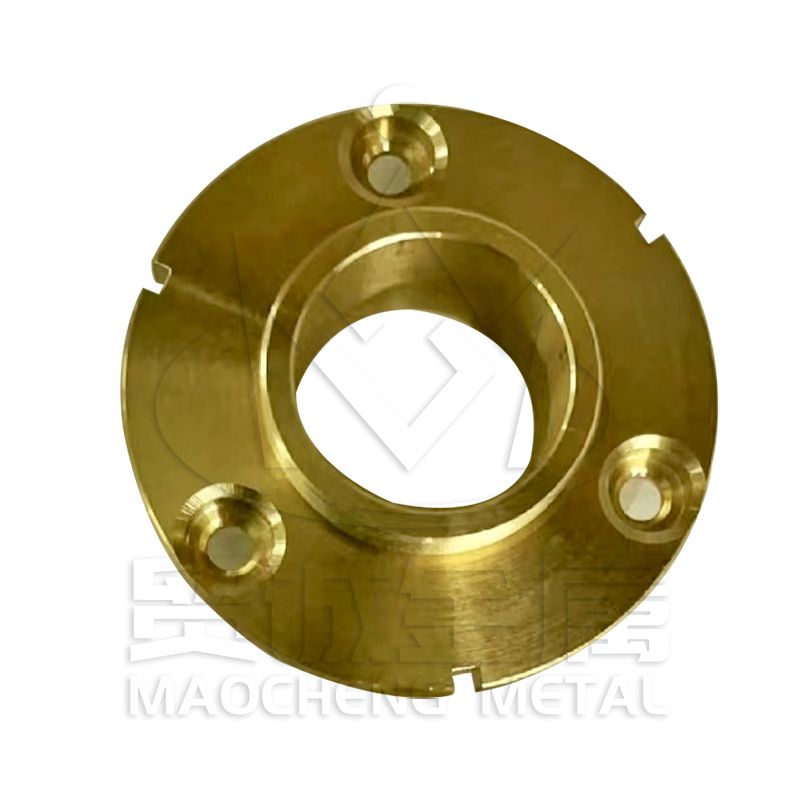Mastering Precision: Techniques for CNC Machining Copper Parts
2024-05-06
In the world of precision manufacturing, CNC machining stands as a cornerstone technology, enabling the fabrication of intricate parts with unmatched accuracy and repeatability. When it comes to machining copper parts, achieving precise tolerances and surface finishes is paramount. In this blog, we'll delve into the specific techniques and considerations involved in CNC machining copper parts to achieve the desired level of precision.
Understanding Copper Machinability:
Before diving into machining techniques, it's essential to understand the unique properties of copper that influence its machinability:
- Softness: Copper is relatively soft compared to other metals, which can lead to challenges such as tool wear and deformation during machining.
- Malleability: Copper is highly malleable, allowing it to be easily formed and shaped. However, this characteristic can also result in burrs and deformation if not properly controlled.
- Thermal Conductivity: Copper exhibits excellent thermal conductivity, which can dissipate heat generated during machining. However, excessive heat can lead to work hardening and poor surface finish if not managed effectively.
Specific Techniques for Precision Machining:
1. Tool Selection: Choosing the right cutting tools is critical for achieving precise tolerances and surface finishes when machining copper parts. Carbide or diamond-coated tools are preferred for their hardness and wear resistance. Additionally, choosing tools with sharp cutting edges and optimized geometries helps minimize tool wear and achieve finer surface finishes.
2. Optimized Cutting Parameters: Fine-tuning cutting parameters such as cutting speed, feed rate, and depth of cut is essential for optimizing material removal rates while maintaining dimensional accuracy and surface finish. Lower cutting speeds and feeds are often recommended for machining copper to prevent excessive heat generation and work hardening.
3. Chip Control: Copper has a tendency to produce long, stringy chips during machining, which can interfere with the cutting process and cause chip entanglement. Proper chip evacuation and control measures, such as using high-pressure coolant and chip breakers, are essential to prevent chip buildup and ensure smooth machining operations.
4. Coolant Selection: Choosing the right coolant is crucial for maintaining tool life and achieving consistent surface finishes when machining copper. Water-based coolants with additives specifically formulated for copper machining help dissipate heat and lubricate the cutting zone, reducing friction and improving chip evacuation.
5. Toolpath Strategies: Implementing effective toolpath strategies, such as high-speed machining, trochoidal milling, and adaptive machining, can help optimize tool engagement and minimize tool wear when machining copper parts. These strategies maximize material removal rates while maintaining dimensional accuracy and surface finish quality.
Considerations for Surface Finish:
Achieving the desired surface finish is a critical aspect of CNC machining copper parts. Some additional considerations include:
- Tool Runout: Minimizing tool runout helps maintain consistent cutting forces and surface finish quality.
- Tool Wear Monitoring: Monitoring tool wear throughout the machining process allows for timely tool changes to prevent deterioration in surface finish.
- Post-Machining Operations: Secondary operations such as deburring, polishing, and surface treatment may be necessary to achieve the desired surface finish on copper parts.
Conclusion:
In conclusion, CNC machining of copper parts requires careful consideration of specific techniques and considerations to achieve precise tolerances and surface finishes. By selecting the right cutting tools, optimizing cutting parameters, controlling chip formation, and implementing effective toolpath strategies, manufacturers can overcome challenges associated with machining copper and produce high-quality parts tailored to a wide range of applications. With a thorough understanding of copper machinability and advanced machining techniques, precision machining of copper parts becomes a seamless process, unlocking the full potential of this versatile metal in manufacturing.



